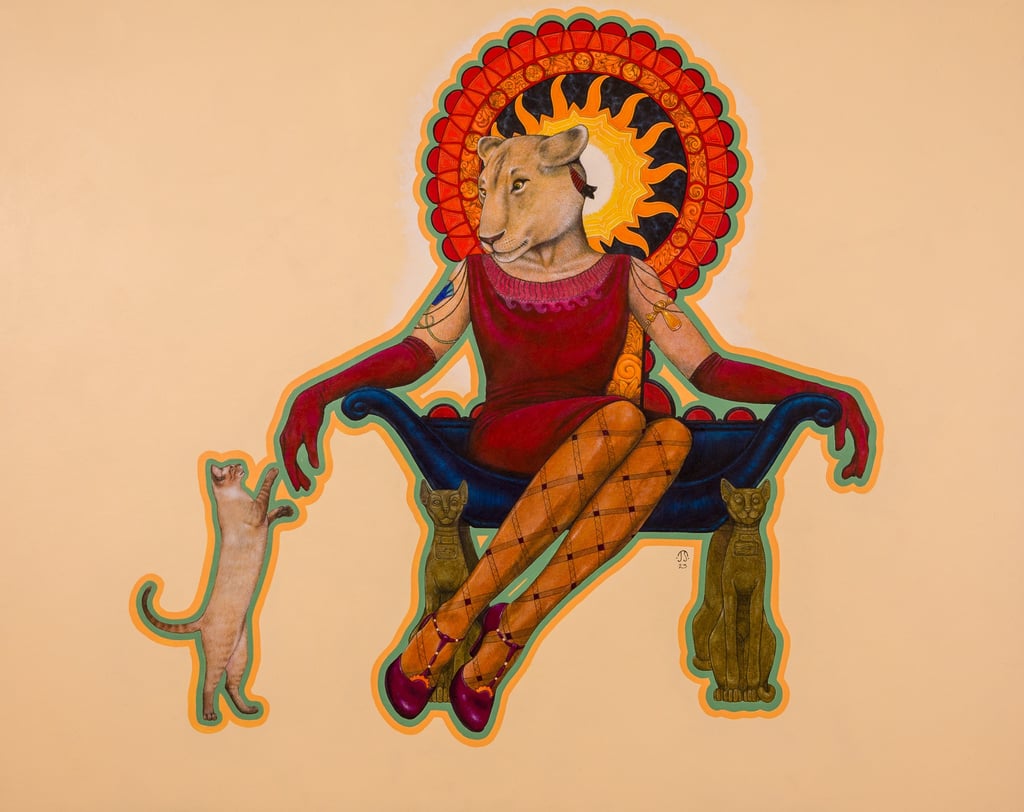

Lady Sekhmet
24x30 Colored Pencil/Acrylic
The Egyptian goddess of war and medicine, relaxing in her happy place with her alter ego, the cat goddess Bastet. She is often depicted with the sun, and can be seen as beneficial or destructive, which jives with the whole cat persona.
Story:
The identity crisis began in the autumn of 1923, when Dr. Sekhmet Williams became one of the first women admitted to the American College of Surgeons, only to have her colleagues question whether a "lady doctor" could handle the brutal realities of wartime medicine. Fresh from the Great War, where she'd saved countless lives in field hospitals while simultaneously advising military strategists on psychological warfare, Sekhmet found herself caught between two worlds that seemed determined to keep her fragmented. The medical establishment wanted her to be gentle, nurturing, properly feminine – everything befitting a "lady physician." The military brass, still reeling from her uncannily accurate predictions about trench warfare psychology, wanted her fierce and ruthless. Neither side could reconcile that she was both, and the constant pressure to choose was driving the ancient goddess to distraction.
The revelation came during a particularly difficult evening in her Park Avenue consulting room, where she'd retreated after a heated argument with the hospital board about her "unconventional methods." Sitting in her favorite Egyptian revival chair – a piece that had followed her through several incarnations – she found herself in deep conversation with Bastet, whose wisdom manifested through the sleek black cat that had appeared in her life shortly after the war ended. The jazz age was reshaping everything about American society, and perhaps it was time for her to stop apologizing for her complexity. Women were bobbing their hair, smoking cigarettes, and demanding the vote; surely one goddess could embrace both her healing touch and her warrior spirit without asking permission from men who understood neither.
By 1925, Dr. Sekhmet had become the most sought-after physician in Manhattan, not despite her contradictions but because of them. Her practice occupied an entire floor of a fashionable building, where her consultation room served as both medical office and philosophical salon. The ornate chair with its sun-burst mandala became legendary among New York's intellectual elite – patients would find her there in the late afternoons, dressed in the latest fashions but surrounded by ancient Egyptian symbols, making life-and-death decisions with the measured wisdom of someone who understood that healing sometimes required destruction, and that true warfare was often about preserving life. Society ladies came to her for both medical ailments and strategic advice on navigating the changing social order, while bootleggers and politicians sought her counsel on matters requiring both discretion and decisive action. As she'd tell the young medical students who began seeking her mentorship, "The modern woman must be both lioness and healer – the age demands nothing less than our full complexity."